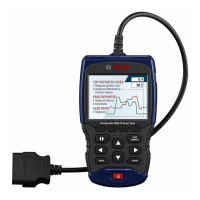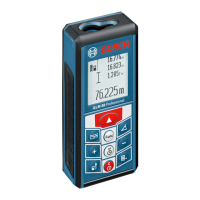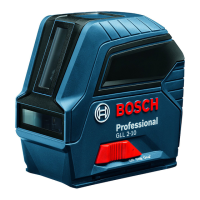en
|
26
|
User guide
| OBD 1350
ProGrade OBDII Scan Tool
580001 | REV. A | 11.2016
Select Module
OBDII/EOBD
Engine
ABS
Airbag
All of the Above
If no DTCs are present, a message stating “System Pass: No
Faults Detected” is displayed. If All of the Above is selected
from the Select Module menu, all of the codes will be
displayed as if all menu items were selected individually.
Read Codes
Press ENTER to continue
No codes found
3. View and write down the DTCs.
• Use the UP and DOWN keys until the
desired choice is highlighted.
This screen indicates where the Read Codes information
is located.
DTC Description
DTC Type
X/Y
Module
DTC#
Erase FFrameRead
DTC Number - number of the trouble code found in
vehicle service information.
X of Y - Indication that code x of y is being viewed,
where x is the code being viewed of the total y.
Module - The name of the module (e.g. ABS) or address of
the module (e.g. Mod $28) or both are shown (ABS $28) in
this field. The table below describes modules supported.
Module Description
ECM Engine or powertrain module
TCM Transmission control module
TCCM Transfer case control module
ABS Anti-lock brake system module
HPCM Hybrid powertrain control module
MOD $XX
Module address for the OBDII/EOBD mod-
ule reporting the DTC
SRS Supplemental restraint system module
DTC Description - This area is reserved for the text describ-
ing the trouble code listed in the DTC number field.
DTC Type - This area is reserved for providing additional
information about the DTC. Multiple DTC types may be
possible for a given DTC number. Not all vehicles sup-
port DTC types. This table describes possible DTC types.
DTC Type Description
History
Intermittent codes placed in the vehicle’s
memory when the trouble originally oc-
curred, and will remain there even if the
trouble has been corrected. If no trouble
after 50 engine warm-up cycles, the DTC
will be erased.
Confirmed
Confirmed codes are reported when a
component, sensor, or other part of the
vehicle is indication a malfunction is pres-
ent.
Current
Codes transmitted through the PCMs da-
ta stream when a trouble condition is ac-
tive and cannot be erased. The problem
must be repaired to remove the DTC.
Intermittent
Indicates the current code has been set
at least once but possibly not enough to
cause a history code to be stored.
MIL
Indicates that this DTC has turned on the
MIL light.
Pending
Pending codes are also referred to as
continuous monitor or maturing codes.
An intermittent fault causes the control
module to store a code in memory. If the
fault does not occur within a certain num-
ber of warm-up cycles (depending on ve-
hicle), the code clears from memory. If
fault occurs a specific number of times,
the code matures into a DTC and the MIL
illuminates or blinks. This function can be
used with KOEO or KOER.
Non-MIL
DTC that is not emission-related and did
not turn on the MIL light.
MIL Code
This DTC type also has a number with it
indicating that this is the code number
turning on the MIL. Vehicle service man-
uals may refer to this number instead of
the one listed in the DTC number field.
Permanent
Permanent codes are a special type of
confirmed code. Permanent codes be-
gan being reported by vehicles around
2010, and therefore not supported by ev-
ery vehicle. While Confirmed Codes can
be erased by the Tool, Permanent Codes
cannot. Permanent Codes are erased by
the vehicle when the vehicle has deter-
mined the fault is no longer present.
SCI Hex
On some vehicles, the code returned by
the vehicle is not known by the scan tool.
If this happens, the scan tool will display
this type along with the code number.
Active
DTC that was present at the time of scan
tool request.
Stored
DTC that was not present at the time of
scan tool request.
The Read, Erase, FFrame softkeys will execute the cor-
responding function as if the function was selected from
the menu.
Examples of Read Codes information screens follow.

